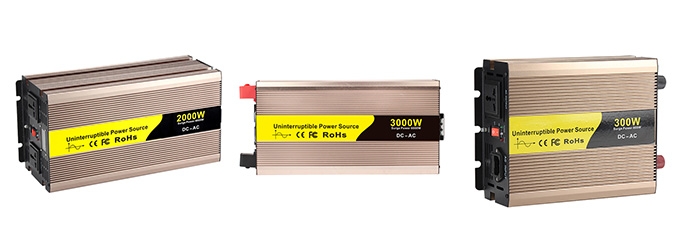As a core component of modern power protection systems, the stable operation of UPS (Uninterruptible Power Supply) inverters is crucial for ensuring the power safety of critical loads. However, with prolonged use, UPS inverters may experience performance degradation or failures due to various factors. Therefore, regular maintenance and upkeep of UPS inverters are essential. This article will provide a detailed introduction to the maintenance and upkeep methods for UPS inverters, covering maintenance plans, procedures, records, and reports, offering valuable references for related professionals.
Routine Maintenance of UPS Systems
To ensure the reliable operation of UPS systems, Inverter.com recommends that you perform regular daily, weekly, and annual inspections. Below are the detailed inspection steps and precautions.
Daily Inspection
If conditions allow, operators should perform routine daily inspections, focusing on the following aspects:
1. Checking the UPS Display Control Panel: Confirm that all graphical display units on the LCD panel are operating normally. Ensure that all power operation parameters are within the normal range. Check the display records for any faults or alarm information.
2. Temperature Check: Inspect for any obvious signs of overheating.
3. Load and Battery Backup Time: Observe the load carried by the UPS and whether there is any change in the battery backup time. If there are changes, check for new loads, the current operation status of the loads, and any unknown faults.
4. Noise Check: Listen for any unusual noises from the UPS input and output isolation transformers. Unusual "hissing" sounds may indicate poor contact or inter-winding insulation issues. Low-frequency "buzzing" sounds may suggest transformer magnetization problems.
5. Fan and Filter: Ensure that the fan exhaust filter on the cabinet is free of obstructions.
6. Filter Capacitor Check: If the UPS output voltage is abnormally high, check if the filter capacitors are intact.
It is recommended to record the inspection results and analyze for any significant deviations from normal operation.

Weekly Inspection
Every week, perform the following checks on the UPS display control panel and record the relevant data:
1. Battery Float Charge Voltage: Measure and record the float charge voltage of the battery pack. For power plant users connected to a 220V DC system, check the performance of the blocking diode.
2. Battery Charging Current: Measure and record the battery charging current.
3. UPS Input and Output Voltage and Line Current: Measure and record the input and output voltage of the UPS. Measure and record the input and output line current of the UPS.
Compare all measured results with the parameters on the panel. If there are significant differences between the measured values and previous records, identify and document any new loads (size, type, and installation location) connected to the UPS output or removed from the user's load bus. If significant deviations from past measured power operation parameters are found without a reasonable explanation, it is advisable to contact us for technical support.
Annual Inspection
Perform a thorough cleaning and maintenance check on the UPS annually. The annual inspection involves high-voltage components and should be performed by trained engineers.
1. Weekly Inspection: Start by following the weekly inspection procedures for the UPS.
2. Shutdown Operation: Follow the recommended shutdown procedures to place the UPS in a shutdown state. Cut off the external AC power input switch and the battery pack input switch. Ensure the UPS is completely powered down before proceeding.
3. Internal Inspection: Open the safety door of the UPS cabinet and check the internal components for any damage. Focus on inspecting the electrolytic capacitors, transformer coils and connections, inductors, cables and terminals, all power fuses, and printed circuit boards for any signs of wear or damage.
4. Cleaning: Use a vacuum cleaner to clean the internal components of the UPS or use a blower with low-pressure air to remove any debris and dust.
5. Reconnect Power: Follow the normal operation steps to switch the UPS back to inverter power mode. If possible, place the UPS under load operation to check if the battery backup time is within the specified range.
By following these steps for daily, weekly, and annual inspections, the safety and stability of the UPS system can be effectively ensured, potential issues can be identified and addressed promptly, and the lifespan of the UPS equipment can be extended.
UPS Inverter Maintenance Procedures
- External Inspection of the UPS Inverter. First, check the external condition of the pure sine wave UPS inverter for any damage, unusual odors, or abnormal noises. Additionally, ensure that the placement of the UPS inverter meets the required conditions, such as being level, maintaining a certain distance from walls, and avoiding direct sunlight.
- Battery Status Check. Since the battery is a critical component of the UPS inverter, it is essential to inspect its status, including voltage, capacity, and charging condition. If issues such as undervoltage, insufficient capacity, or abnormal charging are detected, they should be addressed promptly.
- Connection Line Inspection. Inspect the connection lines of the UPS inverter for any looseness or damage, ensuring good connections. Any problems found should be dealt with immediately to prevent faults caused by poor connections.
- Cleaning the UPS Inverter. Regular cleaning of the UPS inverter can prevent dust and debris from entering the equipment and affecting its normal operation. During cleaning, avoid using damp cloths to prevent damage to the equipment.
- Testing UPS Inverter Functions. Regular function tests of the UPS inverter are necessary to ensure its proper operation. Test parameters include output voltage, output current, and output frequency, as well as verifying that the UPS inverter can switch to battery power mode during a mains power outage.
- Checking UPS Inverter Software. Regularly check the UPS inverter software to ensure it is running correctly and monitor the UPS inverter's status in real time. Any software issues or abnormalities should be promptly repaired or updated.
- Updating UPS Inverter Software. With the advancement of technology, the UPS inverter software is continually updated. Therefore, it is necessary to periodically update the UPS inverter software to fully utilize its performance and improve its stability.
- Handling Faults. If any faults or abnormalities are detected in the UPS inverter, they should be addressed immediately, and the fault handling process should be recorded. For issues that cannot be resolved independently, contact professional personnel for repairs.
- Training Maintenance Personnel. Regular training for maintenance personnel is essential to ensure they are proficient in UPS inverter maintenance skills. Training content should include the structure, working principles, common faults, and troubleshooting methods of UPS inverters.

Maintenance Records and Reports
1. Maintenance Records: Detailed records should be kept for each maintenance activity, including the time of maintenance, maintenance content, issues found, and solutions. These records can provide references for subsequent maintenance and help evaluate the effectiveness of the UPS inverter maintenance.
2. Maintenance Reports: Regularly compile maintenance records into maintenance reports. The maintenance report should include the maintenance status, performance, existing issues, and improvement suggestions for the 2000W UPS inverter. Through maintenance reports, a comprehensive understanding of the 2000W UPS inverter's operating condition can be achieved, providing a basis for future maintenance work.
3. Maintenance Plan Evaluation: Evaluate the effectiveness of the UPS inverter maintenance plan based on the maintenance records and reports. If any problems or deficiencies are found in the maintenance plan, timely adjustments and improvements should be made to ensure the UPS inverter's normal operation and prolong its service life.
The maintenance and upkeep of UPS inverters are crucial for ensuring their continuous and reliable operation. By developing maintenance plans, executing maintenance procedures, and establishing maintenance records and reports, UPS inverters can be effectively maintained and serviced. Additionally, attention should be given to the environmental requirements and usage precautions of UPS inverters to ensure their proper operation and extend their service life. It is hoped that this article will provide valuable reference and assistance to related professionals.
